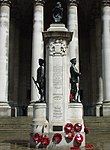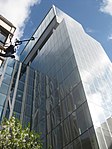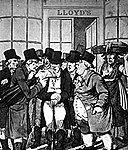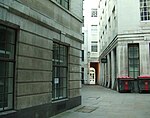St Mary Woolnoth
18th-century Church of England church buildingsChurches in the City of LondonDiocese of LondonEnglish Baroque architectureEngvarB from September 2013 ... and 6 more
Georgian architecture in LondonGrade I listed churches in the City of LondonGreek Revival church buildings in the United KingdomNeoclassical architecture in LondonNicholas Hawksmoor buildingsRebuilt churches in the United Kingdom

St Mary Woolnoth is an Anglican church in the City of London, located on the corner of Lombard Street and King William Street near Bank junction. The present building is one of the Queen Anne Churches, designed by Nicholas Hawksmoor. The parish church continues to be actively used for services, with Holy Communion every Tuesday. St Mary Woolnoth lies in the ward of Langbourn.
Excerpt from the Wikipedia article St Mary Woolnoth (License: CC BY-SA 3.0, Authors, Images).St Mary Woolnoth
Lombard Street, City of London
Geographical coordinates (GPS) Address External links Nearby Places Show on map
Geographical coordinates (GPS)
| Latitude | Longitude |
|---|---|
| N 51.512780555556 ° | E -0.088108333333333 ° |
Address
St Mary Woolnoth
Lombard Street
EC3V 9AN City of London
England, United Kingdom
Open on Google Maps











